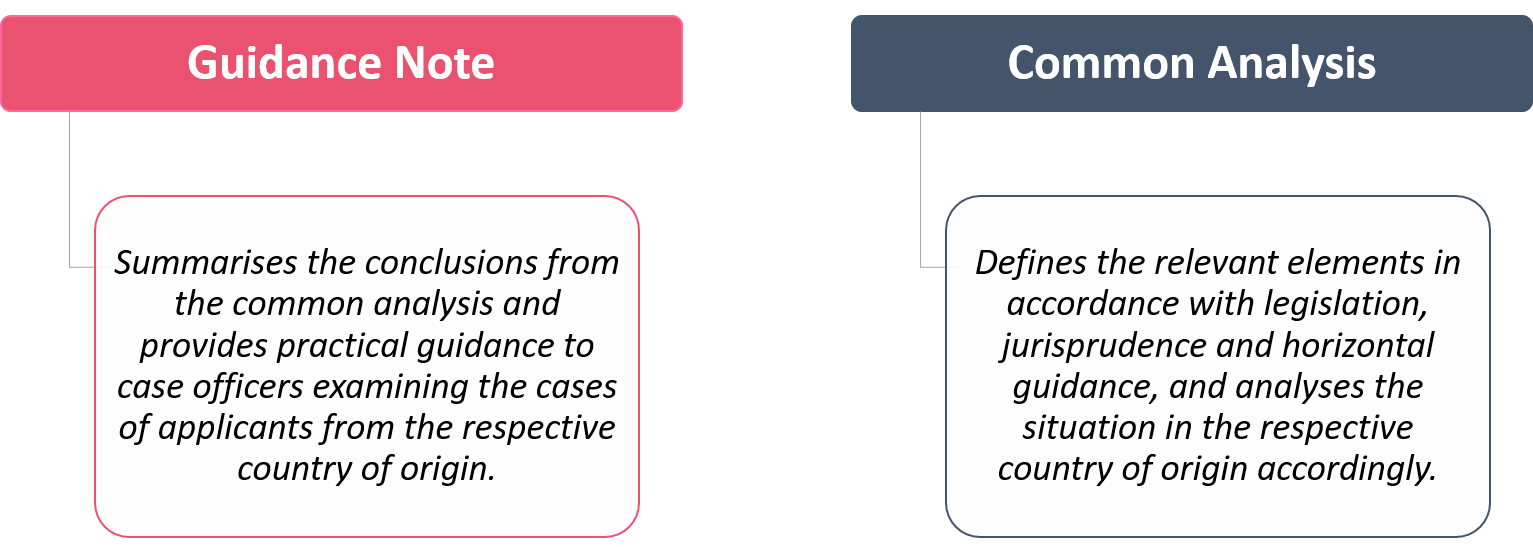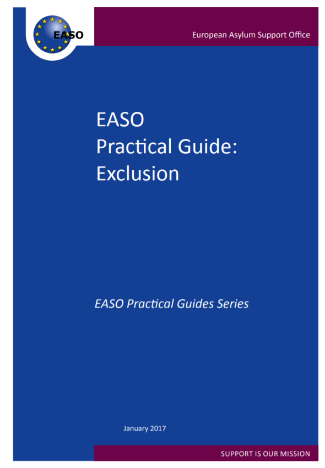|
⚠ |
|
Please note that this country guidance document has been replaced by a more recent one. The latest versions of country guidance documents are available at /country-guidance. |
The country guidance represents the common assessment of the situation in the country of origin by senior policy officials from EU Member States, in accordance with current EU legislation and jurisprudence of the Court of Justice of the European Union (CJEU).
This guidance note does not release Member States from the obligation to individually, objectively and impartially examine each application for international protection. Each decision should be taken on the basis of the individual circumstances of the applicant and the situation in Nigeria at the moment of the decision, according to precise and up-to-date country information, obtained from various relevant sources (Article 10 of the Asylum Procedures Directive).
The analysis and guidance provided within this document are not exhaustive.
Below, you can learn more about the country guidance methodology and how this document was developed:
Why is this country guidance developed?
On 21 April 2016, the Council of the European Union agreed on the creation of a senior-level policy network, involving all Member States and coordinated by EASO, with the task to carry out a joint assessment and interpretation of the situation in main countries of origin.[1] The network supports EU-level policy development based on common country of origin information (COI), by jointly interpreting such information in light of the relevant provisions of the asylum acquis and taking into account the content of the EASO training material and practical guides where appropriate. The development of common analysis and guidance notes was also included as a key area in the new mandate of the European Union Agency for Asylum proposed by the European Commission.[2]
The country guidance is intended as a tool for policy-makers and decision-makers in the context of the Common European Asylum System (CEAS). It aims to assist in the examination of applications for international protection by applicants from Nigeria, and to foster convergence in decision practices across Member States.
[back]
Is this guidance binding?
The country guidance, developed by the Member States and published by EASO, is not binding. The guidance note, accompanied by the common analysis, shall be taken into account by Member States when examining applications for international protection, without prejudice to their competence for deciding on individual applications.
[back]
Who was involved in the development of this country guidance?
This document represents the common assessment of the situation in Nigeria by the Country Guidance Network. The Country Guidance Network was set up by EASO in June 2016, in accordance with the Council conclusions. The first country guidance document was published in June 2018, in the context of a pilot development on Afghanistan.
The work of the Country Guidance Network was supported by a Drafting Team of selected national experts and by EASO.
The European Commission and UNHCR provided valuable input in this process.
The guidance note was endorsed by the EASO Management Board.[3]
[back]
What is the applicable legal framework?
In terms of applicable legal framework, the common analysis and guidance note are based on the provisions of the Qualification Directive (QD)[4] and the 1951 Geneva Convention Relating to the Status of Refugees, as well as jurisprudence of the Court of Justice of the European Union (CJEU); where appropriate, the jurisprudence of the European Court of Human Rights (ECtHR) is also taken into account.
[back]
What general guidance on qualification for international protection is taken into account?
The horizontal guidance framework applied in this analysis is based primarily on the ‘EASO Practical Guide: Qualification for international protection’ and the ‘EASO Practical Guide: Exclusion’.[5] It also takes into account relevant Judicial Analyses, published by EASO, and in particular those on ‘Qualification for International Protection (Directive 2011/95/EU)’, ‘Article 15(c) Qualification Directive (2011/95/EU)’, and on ‘Exclusion: Articles 12 and 17 Qualification Directive (2011/95/EU)’.[6]
Relevant UNHCR guidelines are also taken into account.[7]
[back]
What country of origin information has been used?
The EASO Country Guidance documents should not be considered and should not be used or referenced as sources of country of origin information (COI). The information contained herein is based on EASO COI reports[8] and, in some instances, other sources, as indicated. Unlike the Country Guidance, these represent COI sources and can be referenced accordingly.
The country information analysed hereby includes, in particular, the following EASO COI reports:
- Nigeria, Targeting of individuals (November 2018) [EN] [FR] [IT]
- Nigeria, Sex trafficking of women (October 2015) [EN] [DE] [FR] [IT]
- Nigeria, Security situation (November 2018) [EN] [FR] [IT]
- Nigeria, Actors of protection (November 2018) [EN] [FR] [IT]
- Nigeria, Key socio-economic indicators (November 2018) [EN] [FR] [IT]
- Nigeria, Country Focus (June 2017) [EN] [IT]
References within this document are to the respective sections of these COI reports. [9] See Country of origin information references.
[back]
How does country guidance assist in the individual assessment of applications for international protection?
The guidance note and common analysis follow the steps of the examination of an individual application for international protection. It looks into the relevant elements according the QD and provides a general assessment of the situation in the country of origin, along with guidance on relevant individual circumstances which should be taken into account.
Its approach is consistent with, and should be read in conjunction with, the more detailed horizontal guidance. For an outline and additional guidance on qualification for international protection and exclusion, see:
|
|
|
|||
| EASO Practical Guide:Qualification for International protection, Flowchart poster for practioners [10] | EASO Practical Guide: Qualification for international protection[11] | EASO Practical Guide: Exclusion[12] |
[back]
How is this document structured?
The country guidance is structured into guidance note and common analysis:
 |
| Figure 1. Country guidance elements |

